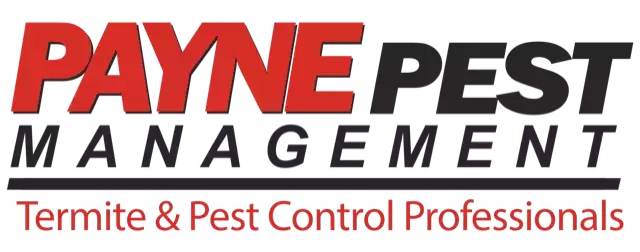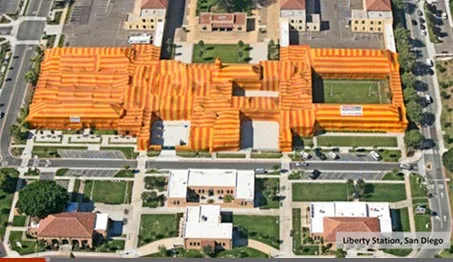Drywood termites are tiny invaders with a big appetite for destruction. They can quietly infest your home, causing significant damage before you even notice their presence. In this blog post, we’ll guide you through the signs of a Drywood termite infestation, so you can catch these pests early and protect your home.
Why You Should Care About Drywood Termites
Drywood termites are not just an inconvenience; they can cause serious structural damage to your home. Unlike subterranean termites, Drywood termites don’t need contact with soil. This means they can infest any dry wood structure, making homes in dry, warm climates particularly vulnerable.
Early detection is crucial. The sooner you identify an infestation, the easier and less costly it will be to address. Understanding the signs of Drywood termites can save you time, money, and stress.
A Closer Look at Drywood Termites
Drywood termites are small but formidable. Measuring about 3/8 to 1 inch in length, these pests have distinctive features such as straight antennae, a uniform waist, and wings of equal length. Knowing what these termites look like can help you spot them early.
These termites live inside the wood they consume, creating intricate tunnels and nests. Unlike other termites that need moisture from the soil, Drywood termites extract moisture from the wood they eat. This unique trait allows them to thrive in dry environments.
Identifying Swarmers in Your Home
One of the earliest signs of a Drywood termite infestation is the presence of swarmers. These winged termites emerge in large numbers, usually during the evening, to mate and establish new colonies. If you see swarming termites inside your home or near windows, it’s a red flag.
Swarmers are often mistaken for flying ants, but there are key differences. Termites have straight antennae, while ants have elbowed antennae. Termite wings are of equal length, while ants have longer front wings. Spotting these differences can help you identify a termite problem quickly.
Discarded Wings: A Telltale Sign
After mating, Drywood termite swarmers shed their wings. Finding discarded wings around your home, especially near windowsills and doorframes, is a strong indicator of an infestation. These wings are translucent and uniform in size, making them easy to identify.
Wings are typically found in piles, as termites tend to shed them in clusters. If you discover these piles, it’s time to take action. Ignoring this sign can lead to more extensive damage down the line.
Frass: The Signature Termite Droppings
Drywood termites produce tiny, wood-colored pellets known as frass. These droppings are a byproduct of their feeding and tunneling activities. Unlike other insect droppings, frass is often pushed out of the wood through tiny holes, creating small piles.
Finding frass around your home, especially near wooden structures, is a clear sign of termite activity. The pellets are about 1mm long and have a granular appearance. Regularly inspecting your home for these droppings can help you catch an infestation early.
Hollow-Sounding Wood
Drywood termites feed on the internal structure of wood, leaving a thin veneer on the surface. This can cause affected wood to sound hollow when tapped. Conducting regular inspections by tapping on wooden structures and listening for hollow sounds can help you detect termites.
Pay close attention to wooden beams, flooring, and furniture. If you notice any areas that sound hollow, it’s important to investigate further. Early detection can prevent further damage and costly repairs.
Buckling or Blistering Wood
Termite damage can cause wood to warp, buckle, or blister. This is due to the termites hollowing out the wood from the inside. If you notice unusual warping or blistering on wooden surfaces, it could be a sign of a termite infestation.
These changes in the wood’s appearance can be subtle at first but become more pronounced over time. Regularly inspecting your home for these signs can help you catch an infestation before it becomes severe.
Tight-Fitting Doors and Windows
Drywood termites can cause structural shifts in your home, leading to doors and windows becoming difficult to open or close. This is because the termites weaken the wood, causing it to expand and contract abnormally.
If you notice that doors and windows are suddenly tight-fitting or hard to operate, it could be a sign of termite activity. Investigating these changes promptly can help you address the problem before it worsens.
Cracks and Small Holes in Wooden Surfaces
Termites create small exit holes in the wood to push out frass. These holes are usually about 1-2mm in diameter and can appear on any wooden surface. Finding these tiny holes in your home’s wooden structures is a sign of termite activity.
In addition to holes, you might also notice cracks in the wood. These cracks can be caused by the internal damage termites inflict. Regularly inspecting your home for these signs can help you catch an infestation early.
Damaged or Sagging Furniture
Termites don’t just target the structural wood of your home; they can also infest wooden furniture. If you notice that your furniture is damaged, sagging, or showing signs of frass, it could be a sign of a termite infestation.
Inspect your furniture regularly, paying close attention to any signs of damage. Catching an infestation early can prevent further damage and save you money on repairs or replacements.
Increased Presence of Other Pests
A termite infestation can attract other pests to your home, such as ants and spiders. These pests are drawn to the damaged wood and the termites themselves. If you notice an increase in the presence of other pests, it could be a sign of a termite problem.
Regularly inspecting your home and keeping an eye out for other pests can help you catch a termite infestation early. Addressing the problem promptly can prevent further damage and complications.
Professional Inspection and Treatment
If you suspect a termite infestation, it’s important to contact a professional pest control service. A thorough inspection by a professional can confirm the presence of termites and determine the extent of the damage.
Professional treatment options include fumigation, heat treatment, and localized treatments. A pest control expert can recommend the best course of action for your specific situation. Addressing the problem quickly can prevent further damage and protect your home.
Drywood termites are silent destroyers that can cause significant damage to your home. By understanding and recognizing the signs of an infestation, you can catch these pests early and take action to protect your property. Regular inspections, prompt action, and professional treatment are key to preventing and addressing termite problems.
If you suspect a termite infestation, don’t wait. Contact a professional pest control service today to ensure your home remains safe and secure. Taking action now can save you time, money, and stress in the long run.
Stay vigilant, and protect your home from these tiny invaders!







